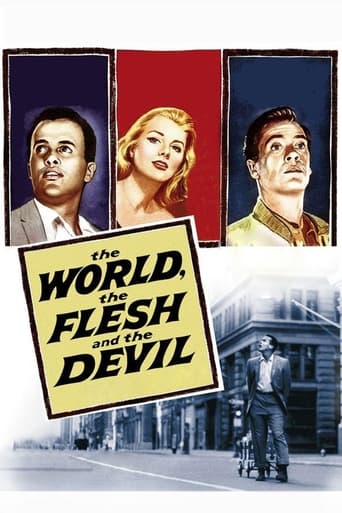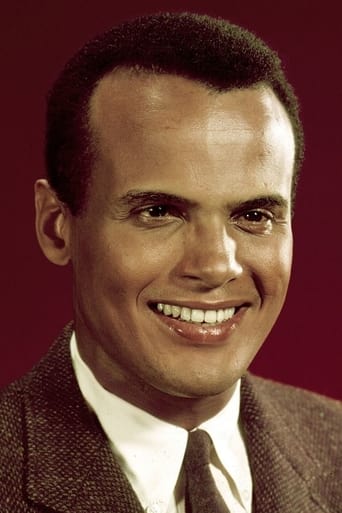Phonearl
Good start, but then it gets ruined
Voxitype
Good films always raise compelling questions, whether the format is fiction or documentary fact.
Siflutter
It's easily one of the freshest, sharpest and most enjoyable films of this year.
Payno
I think this is a new genre that they're all sort of working their way through it and haven't got all the kinks worked out yet but it's a genre that works for me.
Lele
This movie is not just an ugly movie. It is a sad evidence of the general ignorance about nuclear weapons. I wonder how little US people knows about the aftermath of Hiroshima and Nagasaki 1945 bombings. What did they know about 1954 Bikini "Operation Castle", thermonuclear bombs test.Anyway the screenplay is brutally absurd. Starting from the newspapers the man finds in the mine's bureau. The aftermath of the atomic war is: people vanished and streets a little dirtier than usual.How could filmmakers imagine an important target like New York hit by intercontinental missiles which make people disappear but leave all buildings intact and all those brand new cars stuck in the streets: where have the people gone? Where are the corpses?Tell a story of abduction by the aliens: it's more believable than this.2/10
Neil Doyle
The writer took an interesting premise and kept it going with some credibility for the first half-hour. But the moment that HARRY BELAFONTE finds that he's not alone in the world and INGER STEVENS enters the story, it falls apart faster than you can blink. Nor are the interracial aspects of the friendship between Stevens and Belafonte played in a realistic way.Even given the fact that this is science fiction, and we always have to suspend some disbelief to enjoy such a tale, there are too many plot contrivances that don't make sense. Stevens' character has been following Belafonte around for a couple of weeks before she dares to make a connection to him--highly unlikely. MEL FERRER turns up on a river barge having been all over the world looking for survivors and found none--apparently not even bodies. And yet we see pigeons on the streets of New York City early in the morning but a complete lack of corpses anywhere. Nevertheless, stores and wiring and electricity are almost untouched and there's even running water in the kitchen.But what keeps the film on a lower level is the talent involved. HARRY BELAFONTE gives the most genuine performance here, but that's not saying much when you have the wooden MEL FERRER and the overly emotional INGER STEVENS tossing off lines as though they were doing a run through rehearsal for the senior play. Belafonte is fortunate in that his character seems the most logical and inventive of the three, while the plot gets sillier the moment the men start arguing over the attractive blonde and some racial remarks are made.It doesn't help that the dialog is often childish or stilted and that Ranald MacDougall's screenplay and direction is unable to bring these characters alive and give them any depth. After the realistic first half-hour, the rest of the film is a letdown.Miklos Rozsa's score is fittingly as low-key as the scenes showing a deserted city, but it has to be one of his least memorable works.
pppossum
This film was an excellent film of its type. It was daring in its (not quite complete--you couldn't get away with it then) treatment of race in those times. The film clearly pointed--it never said--that Inger Stevens would end up with the best man.It was extremely well acted. Belafonte was so human, so believable as the telephone engineer who couldn't accept this end. When race arose in the picture, it arose as a problem, a real problem, but not an hysterical diatribe. Inger Stevens was good. Mel Ferrer, as another viewer noted, was not the easy bigot, but a man who was used to getting his way, given the methods society allowed. He didn't really care about Belafonte's color, but about the girl. The script, given the willing suspension of disbelief you needed to accept a world in which no bodies could be seen, was excellent as well. As for realism, the theatre (correct spelling, IMDb!) has been using this kind of signification since Greek theatre didn't allow acts of violence on the stage. My only problem is not being able to get a copy because of the years of bad press from a public that loves gore more than human substance.
brujay-1
In the '50s the nuclear holocaust was never far from the popular imagination. This picture is one of many fictional efforts to show what might have happened. By being trapped in a Pennsylvania mine, Belafonte is one of the very few people on earth (as far as we know from the film, only three) to escape annihilation. He manages to get out of the mine on his own (the first of many plot contrivances), goes to New York City and finds it depopulated, except for Inger Stevens, who eventually comes out of hiding. It's mostly a picture about loneliness. As much as we may resent the jostling masses in our midst, what if they were gone?Actually, it spurs a fantasy, too. Imagine that you had the pickings of all of New York to yourself, and imagine that you were a handyman who could rig up generators and the like, and imagine that you found a comely woman to keep you company. Could be worse.But we are asked to ignore too much in the picture, the fact that only one person in all of the city survived, the fact that not a single rotting body is shown on the streets, the fact that the shortwave transmissions Belafonte regularly monitors show that the rest of the world is empty, too (except, eventually, for Mel Ferrer, who was sailing during the nuclear blasts)-- all a bit too much. The film tries too hard to be an allegory when it should have been good, logical science fantasy.Nevertheless, TWTF&TD is well worth a watch.



